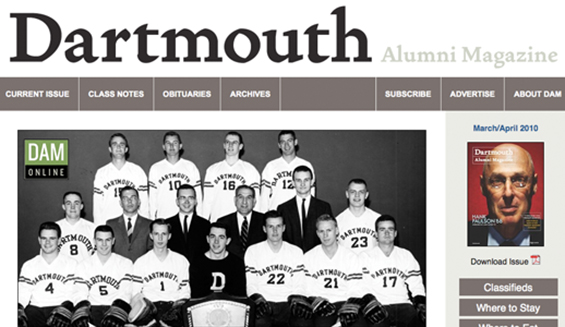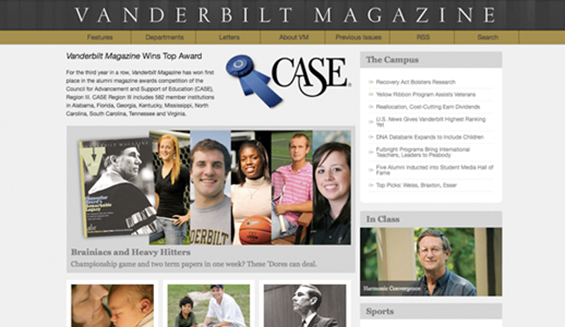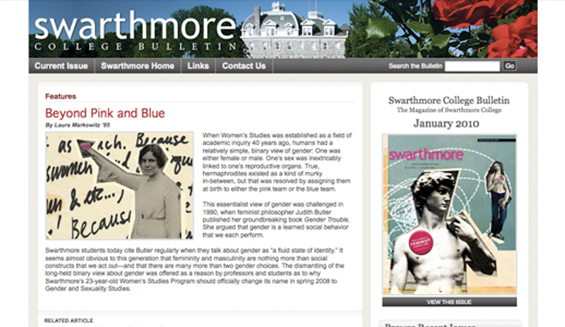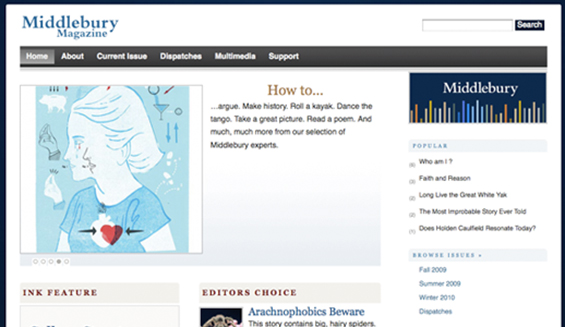
When many people think of the term “blog” they tend to envision a personal journal. But today blogging platforms have expanded into a much broader use, ranging from school websites to online publications. With a built-in Content Management System and templated design capabilities they can be an excellent, cost effective way to develop an interactive online alumni publication. If you are thinking of taking your publication online, or need to update what you already have, a blogging platform may be the solution for you.
By looking at a blog solution, you are opening up options for you and your audience. A web-based publication built on a blogging platform allows your audience to build a community around its content, provides instant reader feedback for you, and connects you with your audience. There is no question that blogging software, such as WordPress, is an excellent resource for creating an online publication on a tight budget. But is it right for your publication? Here are a few things to consider:
Delivery
The blogging platform provides a built-in delivery system known as RSS (Really Simple Syndication). The benefit of RSS is that your audience can subscribe to your magazine’s RSS feed and have it delivered to a reader. Some readers are web-based like Google Reader and Bloglines, or desktop applications like FeedDemon and NetNewsWire, and of course there are mobile device versions like Byline and Pro RSS Reader. If your audience is reading your magazine in their readers it’s crucial that the content be written to encourage clicking on links to bring the reader back to the website. Upon returning to the website the reader becomes a participant in the magazine’s community and is exposed to the visual brand as well as the written brand.
Social Media
Since blogging platforms were built to post articles so easily they have a natural fit with other social media websites and applications. To get your message out to your tech-savy audience consider connecting your online magazine to other blogs (Blogger, Typepad), video- and photo-sharing websites (YouTube, Flickr, Vimeo, Twitter), and social networking websites (Facebook, MySpace, Twitter). Most likely some segment of your audience is using some of these websites, so why not let them help promote your content.
Web Address as Brand
It goes without saying that your web address is part of your overall brand. The challenge of using some blogging systems is that your web address might have another brand embedded within it. If your publication’s title is “Magazine Monthly” and you’re using Google-owned blogspot, the web address would be magazinemonthly.blogspot.com. The better option, if you have available resources, would be to not only purchase the domain name of magazinemonthly.com but variations that might be used by your audience. Some variations might be magmonthly.com, magazinemonth.com, and magazine-monthly.com. For the really adventurous brands, try www.domai.nr, where you can find alternative domains, such as magazinemonth.ly or magazi.ne/monthly (monthly would be a folder on the domain).
Customize the Design
There are thousands of free templates built for WordPress that can be further customized to visually relate to your print publication (if you have one). You may not get exactly what you want, but if you can let go of some of the details, you can get close. The key to using existing templates is the grid. Just as you would start by defining a grid system for your print publication, you need a strong, flexible grid in web design. Find a template with a good grid and let your web consultant apply your visual identity as best he can.
Maintaining It
Many smaller publications cannot afford to build out a customized content management system (CMS). Blogging software comes with an easy-to-use CMS built in. It will take some time to learn the interface of the system, but for the most part it’s a WYSIWYG (What You See Is What You Get) application. Everybody’s favorite commands of copy and paste will work to get your text into the text editor. Uploading photos and videos is usually just a couple of extra clicks of the mouse. Many of the systems also allow you to customize access for the many people who maintain the website: For example, administrators who manage the site can access the entire CMS; editors are able to access articles and accept or decline comments; and contributors can post articles.
Alumni magazines are unique in the sense that they deliver content to an existing audience. But the time of one-way conversation is behind us. It is imperative to connect with alumni and engage conversation. By taking your publication online you create something manageable to maintain that is also cost effective.






Leave a Reply